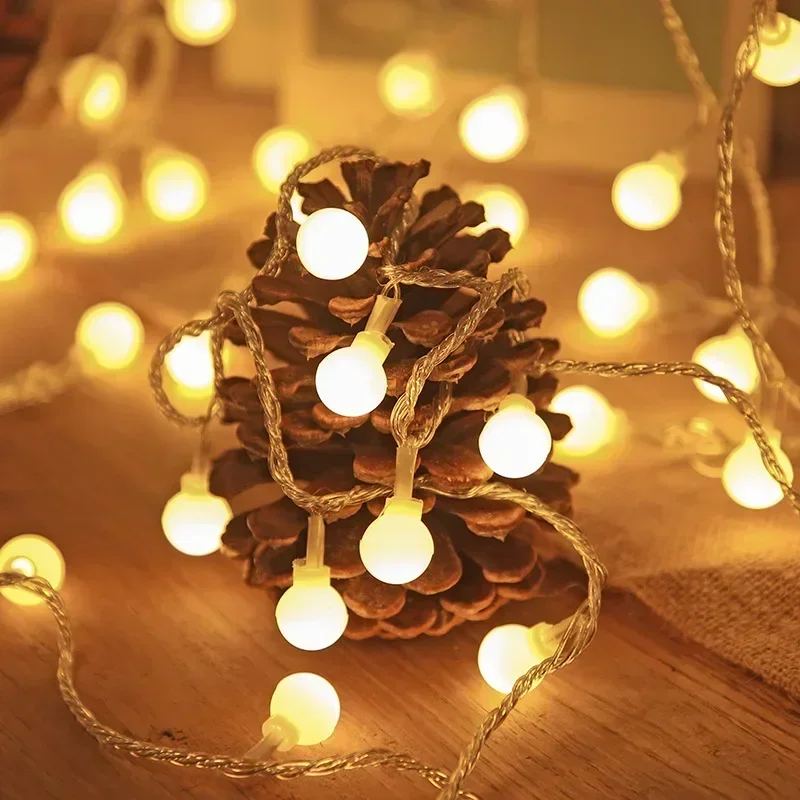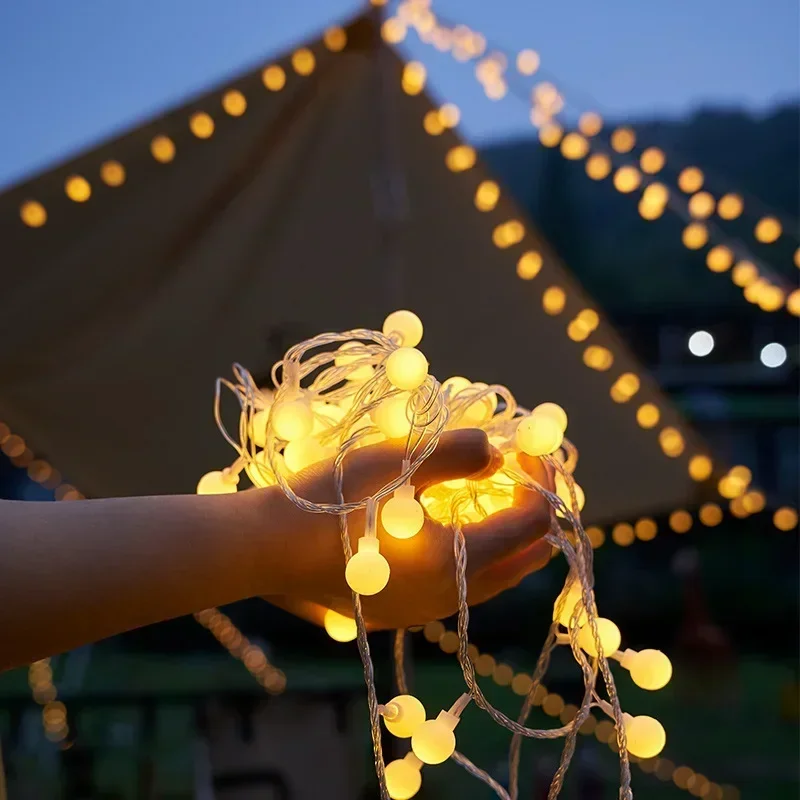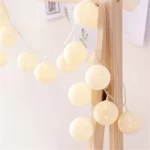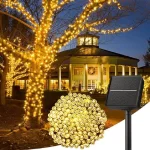String lights, whether they’re holiday decorations, garden illuminations, or indoor mood lighting, can add a beautiful touch to any space. However, like any other electronic device, string lights can become faulty over time. Knowing how to fix a string of lights can save you money, and help you avoid the frustration of having to replace entire sets. This guide will help you troubleshoot and fix common issues associated with string lights, ensuring your spaces stay beautifully illuminated.
Understanding the Basics of String Lights
Before diving into how to fix a string of lights, it’s essential to understand their basic components. Typical string lights comprise a series of small bulbs connected along a flexible wire, powered by either batteries or an electrical outlet. Each bulb is part of an electrical circuit, and the functioning of the entire string can depend on the integrity of each bulb and the connecting wires.
Modern string lights often have two wiring configurations: series and parallel. In series wiring, the current flows in one continuous pathway through each bulb; if one bulb fails, the entire string may go dark. In parallel wiring, each bulb operates independently, so one bulb’s failure doesn’t impact the rest. Understanding these configurations is crucial, as it affects how you approach troubleshooting and fixing faults.
The primary components you’ll need to focus on during troubleshooting include the bulbs, the wire connections, the plug, and any integrated circuit components like fuses. Having a basic understanding of these elements provides a good foundation as you move forward to diagnose and address issues with your string lights.

Safety Precautions
Safety should always be the first priority when working with electrical devices. Before you start troubleshooting or fixing a string of lights, make sure that the lights are unplugged or turned off if they are battery-operated. Handling a live electrical string can not only damage the lights but also pose significant electrical shock hazards.
Inspect the cord for any visible damage, such as frayed wires or exposed copper. Such damage can be dangerous and may require more than just a simple fix—sometimes, it’s safer to replace the string entirely. Use insulated tools where possible, and if you’re working on an outdoor string of lights, ensure that the ground is dry to minimize the risk of electric shock.
If you’re unsure about any part of the repair process or if it involves complex electrical components, consulting a professional electrician is strongly advised. While doing it yourself can be rewarding and cost-effective, it’s not worth risking your safety.
Identifying the Problem
The first step in troubleshooting a faulty string of lights is to identify the problem. Several issues could cause malfunctioning in string lights, including blown bulbs, loose connections, faulty fuses, or damaged wiring. Carefully inspect the string of lights to look for visible signs of damage. Check for broken or burnt-out bulbs, frayed wires, and damaged plugs.
A helpful tool in this process is a light tester, which can quickly identify which bulbs or sections of the string are causing problems. Light testers come in various forms; some are as simple as a voltage detector pen, while others are more complex devices designed specifically for string lights. Running the tester along the string can pinpoint the exact location of the fault.
It’s also important to check the functionality of the plug and circuit. If the lights are plugged into an outlet, ensure the outlet is working correctly by testing it with another device. For battery-operated lights, check the battery compartment and replace the batteries if needed. Sometimes, the problem may be as simple as depleted batteries or a loose plug connection.
Fixing Blown Bulbs
Blown bulbs are one of the most common issues in string lights, particularly in series configurations, where one faulty bulb can cause the entire string to go dark. To fix blown bulbs, begin by identifying the faulty one. This can be done by visually inspecting each bulb for blackening or damage, or by using a light tester.
Once you’ve identified the faulty bulb, carefully remove it from the socket. For most string lights, this involves gently pulling the bulb straight out. Avoid applying excessive force, as this can break the bulb or damage the socket. Replace the blown bulb with a new one of the same type and voltage rating. It’s crucial to use the correct replacement bulb to ensure the string lights function correctly and safely.
If replacing the bulb doesn’t solve the problem, the socket might be damaged, or there could be another faulty bulb in the string. Continue checking each bulb until all faulty bulbs are replaced. In some cases, you might need to replace multiple bulbs to restore the full functionality of the string.
Addressing Loose Connections
Loose connections can cause sections of string lights to flicker or go out completely. To fix loose connections, start by inspecting each bulb socket to ensure the bulbs are securely in place. Sometimes, bulbs can become slightly dislodged, disrupting the flow of electricity.
Gently push each bulb into its socket to ensure it’s making proper contact. If a bulb is loose, you might feel it click back into place. Once secured, plug the lights back in to see if the issue is resolved. If the problem persists, the loose connection might be within the wiring or plug.
Check the plug and any accessible areas of the wire for breaks or frays. If you find any, you might need to cut out the damaged section and reconnect the wires using wire connectors and electrical tape. Ensure the wires are twisted together securely and fully insulated with tape to prevent electrical shorts or shocks.
Replacing Fuses
Many string lights are equipped with small fuses to protect the circuit from overloads and prevent potential fire hazards. If your entire string of lights is not working and you’ve ruled out blown bulbs and loose connections, a blown fuse could be the culprit.
To replace a fuse, locate the fuse compartment, typically integrated into the plug. It may have a slide-out panel or screw cap. Open the compartment and carefully remove the fuse. Examine the fuse to see if the filament inside is broken or the glass is blackened, indicating it’s blown.
Replace the blown fuse with a new one of the same size and rating. Fuses are usually rated in amps, and using the correct rating is essential for safety. After replacing the fuse, plug the string lights back in to check if they are now functioning correctly. If the fuse blows again, there might be a deeper issue requiring professional attention.

Repairing or Replacing Damaged Wires
Damaged wires are another common issue that can lead to malfunctioning string lights. Over time, wires can become frayed or broken, particularly if the lights are exposed to elements or frequently moved.
To repair damaged wires, start by unplugging the string lights for safety. Inspect the entire length of the wire to locate any frayed or broken sections. Use a wire cutter to trim away the damaged portion, making a clean cut on each side of the break.
Strip about half an inch of insulation from the ends of the cut wires to expose the copper strands. Twist the exposed strands together to ensure a good connection. Use wire connectors to secure the twisted wires and cover them with electrical tape to insulate and protect the connection. For an added layer of security, consider using shrink tubing over the repair area and applying heat to seal it.
If the wire is extensively damaged or you’re uncomfortable making these repairs, it might be more practical and safer to replace the entire string of lights.
Preventive Maintenance Tips
Taking steps to prevent common issues can extend the life of your string lights and reduce the need for frequent repairs. One preventive measure is to avoid excessive bending or twisting of the wires, which can cause internal damage. When storing your lights, wrap them loosely around a piece of cardboard or a spool to prevent tangling and kinking.
For outdoor string lights, consider using weather-resistant types specifically designed for outdoor use. These are built to withstand the elements better than indoor lights. Additionally, using surge protectors can help protect your string lights from power surges, which can blow fuses or damage bulbs.
Regularly inspect your string lights for wear and tear, especially before and after each season of use. Promptly addressing minor issues like loose connections or frayed wires can prevent them from escalating into more significant problems that require extensive repairs or replacements.

Conclusion
Fixing a string of lights doesn’t have to be daunting. By understanding the basics, prioritizing safety, and following systematic troubleshooting steps, you can resolve most common issues yourself. From replacing blown bulbs and fuses to addressing loose connections and repairing damaged wires, this guide provides comprehensive insights to help you keep your string lights in perfect working order.
Preventive maintenance and timely interventions can extend the lifespan of your string lights, saving you time and money in the long run. Whether you’re brightening up your holiday decorations, setting the mood in your garden, or enhancing the ambiance indoors, well-maintained string lights can make a significant difference. With these practical tips and solutions, you’re well-equipped to handle any lighting issues and keep your space beautifully illuminated year-round.


